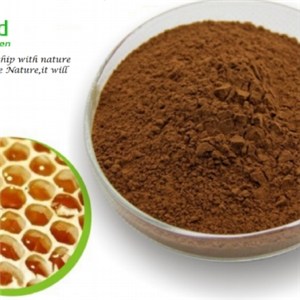| Message: | Origin: Melland Organic Apiary Union of China
Propolis is a resin that is gathered and,Website:http://www.mellandecogreen.com, in part, metabolised by bees for lining their beehives. It's use in medicine has been known for several years, as a disinfectant and as an antibacterial.
※Chemical Composition※
Propolis is a resin, melting point, 30-35°c. It is brown in colour and has a vanilla type odour. It is a complex mixture of chemical compounds 20 of which have been separated and identified, most of these compounds are flavanoids.
※Cosmetic Applications and Grades※
Propolis extracts can be used in cosmetic products for treating impure skins. Also in deodorants, emulsions and after-shave lotions, and in hygiene products for the scalp, and in toothpastes etc.
Propolis Extract L10: A concentrated propolis extract 10% by weight in distilled Lanocerina. It is a low-melting paste of an intense yellow colour, easily emulsifiable .
Due to the type of base used, it is particularly useful for the preparation of emulsions (creams, milks etc) anhydrous pastes, sticks. Dosage 3-5%.
Propolis Extract H5: A concentrated extract of propolis, 5% by weight in a mixture of nonionic solvents. A clear solution, slightly viscous with a brownish yellow colour, soluble in water and in hydro-alchoholic solutions. It can readily be used in the preparation of lotions, tonics, foam baths and shampoos. Dosage 2-5%
Propolis Extract G5: A concentrated extract of Propolis, 5% by weight in Propylene Glycol. It is a viscous liquid of brownish-yellow colour, easily emulsifiable . It is used for the preparation of emulsions (vanishing creams, milks) toothpastes etc. Dosage 3-5%.
Propolis Powder: A free flowing powder containing 8-10% Aerosil, for use in health foods. |
 my account
my account
 log out
log out
 my account
my account
 log out
log out
